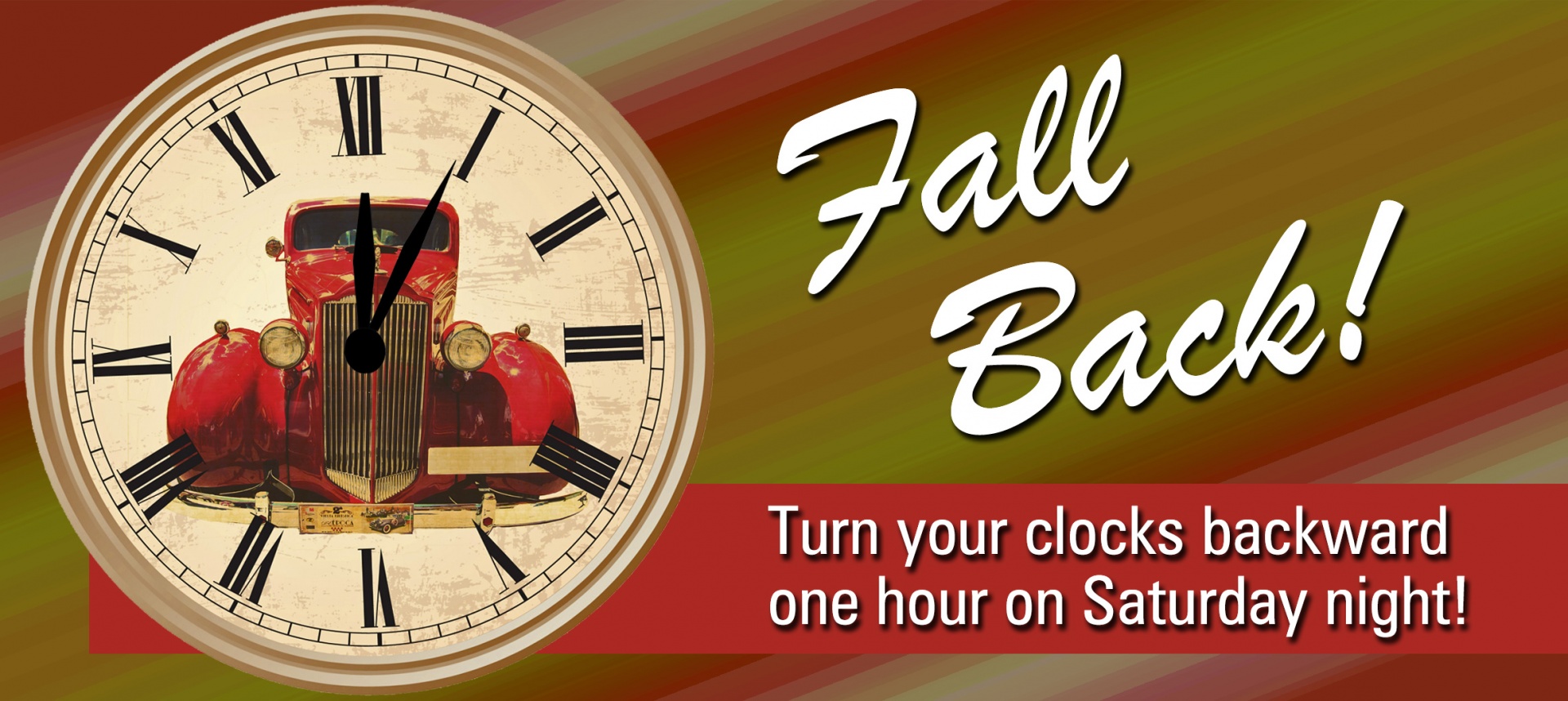
Cynthia Stevens
publicdomainpibtures.net
Daylight Savings Time ended at 2am this morning. If you did not set your clock back one hour, now is the time to set your clocks back. The debate over changing how we set the hours in a day has been going on for a long time. In olden times, people pretty much went by the sun and its position in the sky. Then as we got more sophisticated, we developed devices that measured how time passed during the day. To help people who did not have such devices, churches or government buildings rang bells hourly. Ships had bells that chimed off the watch so the crews knew exactly what time it was. The standardization of time was encouraged by railroads and steamships that needed to have accurate schedules for trains to run. That led to international standards being developed and time zones created.
Most were fine with standard time, which simply put is when the sun comes up and goes down according to the astronomical calendar. That generally means more sunlight in spring and summer and less sun in the autumn and winter. It was during World War I that the first use of what is called Daylight Savings Time. Germany introduced to conserve fuel by extending the clock by one hour. The US introduced it as well in 1918 which had it begin in March 1918 and end in October. Once the war was over though, the law was repealed. Daylight Savings was unpopular in many areas (mostly rural). Some cities kept though (like New York City). Nationwide Daylight Savings was reintroduced in 1942 but made year-round during the war. After the war, many states adopted the use of Daylight Savings as summer Daylight Savings Time. Not all did though, which led to confusion with transportation timetables. Pressure was brought to bear on the federal government to act.
In 1966 the Uniform Time Act was enacted imposing nationally both Standard and Daylight Savings Time. Starting in 1967, clocks were advanced one hour on the last Sunday in April and fell back one hour on the last Sunday in October. States were given the option whether to change their clocks or not. Daylight Savings was once again imposed nationally during the Arab Oil Embargo between 1973-1975. It started out popular but quickly faded. My mother didn’t like it since mornings were very dark in the winter during this time. Its popularity dropped and it came to an end. In 2007 the start of Daylight Savings was changed to starting on the second Sunday in March and ending on the first Sunday in November. The downside was and still is that some areas have sunrise during Daylight Savings as late as 8:30 am.
Various states and groups have sought for the reintroduction of national Daylight Savings to avoid the changing of the clocks. Many cite the hassles and the fact it causes problems adjusting to changing forward and back. States passed laws in support of the change. In 2022 the U.S. Senate passed the Sunshine Protection Act to impose Daylight Savings nationally. It went to the House of Representatives but has not been acted upon. A lot of groups protest the change and so it has not been brought to a vote.

